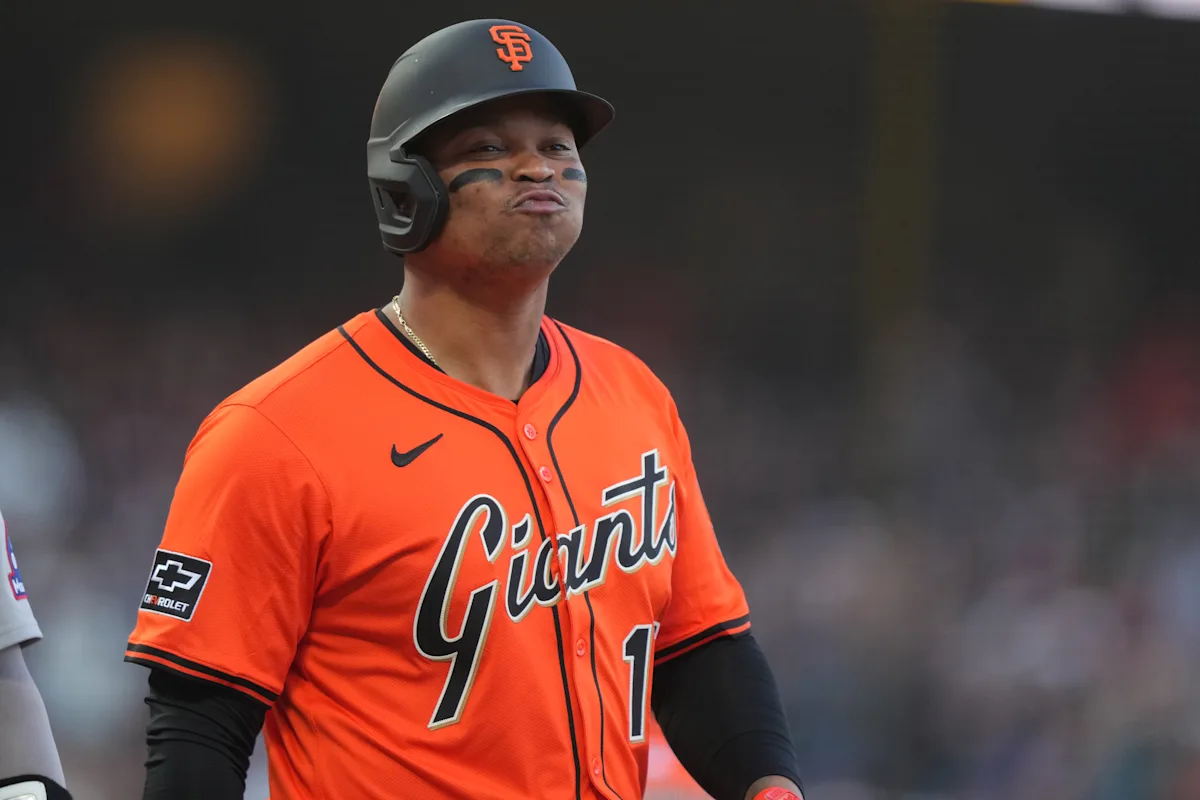The highly anticipated matchup between the San Francisco Giants and the Boston Red Sox took center stage as Rafael Devers faced his former team for the first time since the blockbuster trade that sent him to the West Coast. The game was filled with storylines, but Devers’ performance, or lack thereof, became the focal point. This article delves into Devers’ return, the underlying tensions between him and the Red Sox, and the overall implications of this high-profile game.
Devers’ departure from Boston was marked by a public falling out with the Red Sox front office, making this game more than just another contest on the schedule. His struggles at the plate and the Giants’ loss add another layer to the narrative. We’ll explore the key moments of the game, Devers’ comments before and after, and what this all means for both Devers and the Red Sox moving forward.
Devers’ Disappointing Return to Fenway
Rafael Devers’ return to Fenway Park was met with a mix of anticipation and curiosity. Traded to the San Francisco Giants after a very public dispute with the Red Sox management, Devers’ first game against his former team was always going to be a major talking point. However, the game itself didn’t quite live up to the hype for Devers.
Playing as the designated hitter, Devers struggled at the plate, going 0-for-5. Despite the pre-game ovation from the Boston crowd, he couldn’t translate that goodwill into on-field success. His struggles included a line drive robbed by Ceddanne Rafaela and a strikeout against Aroldis Chapman’s blazing fastball. This performance undoubtedly added fuel to the narrative surrounding his departure and his relationship with the Red Sox.
Giants vs. Red Sox: A Detailed Game Recap
Beyond Devers’ personal storyline, the game between the Giants and Red Sox was a closely contested affair. The Red Sox ultimately prevailed with a 7-5 victory, but the game featured several lead changes and dramatic moments. Ceddanne Rafaela’s defensive play, robbing Devers of an extra-base hit, was a highlight. The Red Sox pitching staff managed to keep the Giants’ offense at bay, while their own bats came alive at key moments.
Aroldis Chapman’s appearance, resulting in a strikeout against Devers, was a significant moment. Chapman’s velocity proved too much for Devers, symbolizing the challenges Devers faced throughout the night. The game highlighted the strengths and weaknesses of both teams and provided a glimpse into their potential for the remainder of the season.
The Root of the Devers-Red Sox Divide
The trade that sent Rafael Devers to the Giants was not simply a baseball transaction; it was the culmination of growing tensions between the player and the Red Sox front office. The issues stemmed from the team’s plans to shift Devers from his natural third base position to designated hitter and potentially first base. Devers publicly expressed his displeasure, creating a rift that ultimately led to his departure.
Devers’ comments about earning respect after putting up good numbers in Boston underscored the depth of the divide. His willingness to play first base at the beginning of spring training, contrasted with his later refusal, highlighted a breakdown in communication and trust. These issues, as noted by Red Sox brass, ultimately made his position with the team untenable.
Devers’ Perspective: Moving Forward with the Giants
Despite the disappointing performance against his former team, Rafael Devers maintains a forward-looking perspective with the San Francisco Giants. He has been practicing at first base and expressed a willingness to play wherever the team needs him. This adaptability is crucial as he seeks to establish himself as a key player for the Giants. His focus on the future suggests a desire to put the Red Sox saga behind him.
Devers’ ability to adjust to a new team and potentially a new position will be critical for his long-term success in San Francisco. While the initial results against the Red Sox were not ideal, his attitude and work ethic indicate a commitment to making the most of his opportunity with the Giants. Only time will tell if he can recapture his offensive form and solidify his place in the Giants’ lineup.
Red Sox Post-Devers: Rebuilding and Realignment
The departure of Rafael Devers marks a significant turning point for the Boston Red Sox. Without their long-time star, the team is now focused on rebuilding and realigning their roster. The decision to trade Devers reflects a strategic shift, prioritizing flexibility and team chemistry over individual talent. The Red Sox are now looking to develop young players and create a more cohesive unit.
The Red Sox have the opportunity to redefine their identity and build a sustainable future. While the absence of Devers will undoubtedly be felt, it also creates opportunities for other players to step up and take on leadership roles. The success of this new era will depend on the team’s ability to identify and develop talent, foster a positive team environment, and make smart strategic decisions.
Key Takeaways and Future Implications
Rafael Devers’ return to Boston was a story of personal struggles and underlying tensions. His 0-for-5 performance against the Red Sox was a stark contrast to the pre-game ovation he received, highlighting the complex relationship between him and his former team. The game underscored the communication and personality conflicts that ultimately led to his trade.
For Devers, the focus now shifts to establishing himself with the Giants and proving his value in a new environment. For the Red Sox, the focus is on rebuilding and creating a cohesive team without their former star. The long-term implications of this trade will continue to unfold as both Devers and the Red Sox navigate their respective paths forward. The game served as a reminder that baseball is as much about personal dynamics as it is about on-field performance, and that the consequences of these dynamics can have lasting impacts on both players and teams.

Leave a Reply